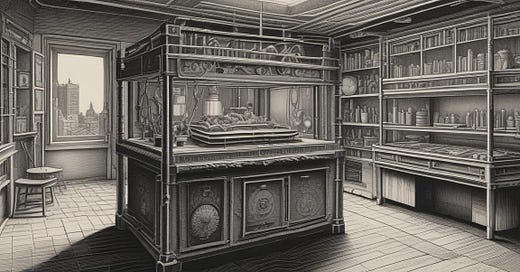I’m planning on digging into additive manufacturing more later, but for this weeks thought for Thursday I wanted to consider 3D printing. Do we really have things like the food replicator from Star Trek on the way? Or will this always be a small scale niche type business?
3D Printing the Future
3D printing has come a long way from its start. As with all technology prints are getting smaller and cheaper, at least for an entry level. They have also gotten better at printing other materials. Many companies from GE to Adidas are using 3D printers for products they product today. But what does that mean for a small scale shop like yours? Should you be putting all your money into 3D printing for your future? Consider, 3D printing can reduce manufacturing costs by 70% and lead times by 90% compared to traditional methods, according to a study by Wohlers Associates. Wohlers Report 2021 So the short answer is “No” I would not stop everything your are doing and invest everything in 3D printing, unless you are trying to set up a 3D printing shop. But consider some parts that could be 3D printed. Consider:
Would 3D printing make a better product for your customers?
3D printing can lead to lighter products that still met the functional needs.
3D printing can reduce your material waste.
3D printing can reduce material waste by up to 90% compared to subtractive manufacturing techniques like CNC machining. The Economist
Does 3D printing make it easier to product multiple products?
Can you run the 3D printer over night?
Are the products small enough that you can print 5 or 10 at a time?
3D printing is for sure here to stay. The global 3D printing market is expected to grow from $13.7 billion in 2020 to $63.46 billion by 2026, at a CAGR of 28.5% during the forecast period. This indicates the rapid adoption and expansion of 3D printing technology across various industries. MarketsandMarkets One simple way for your to start would be to find a company like Sculpteo to trial some parts as 3D printed and see how they work out. The key for you is to determine will it make your business better or is it a money pit. Next we’ll look at some of the downsides.
3D Printing Not so Hot
3D printing offers numerous advantages, but it also presents several challenges, particularly for small-scale manufacturing shops. I’m not going to cover everything here in this post but some items to consider.
3D printing is expensive to start up. There is a reason that the companies in the section above were all large companies. They have bigger R&D budgets and facilities. So it’s easier for them to invest in 3D printing early on and swallow the sunk cost of the machines and material to 3D print. You may not be able to handle that cost and that’s ok. Find other ways to trial 3D printing if you want, or just stick with what is working. Another good reason to stick with what you are doing is there is less limitation on your material. Not all materials can be 3D printed. We’re really great at 3D printing plastic, but you probably need to product more than just plastic parts. Sure you could use the plastic parts for a fit test or a dry run, but you need other materials to meet your customers needs.
3D printing also is going to have limitations on its production capabilities. Each machine has a limited area to print on and they can only print so fast. So you may actually see your production time increase as you start to 3D print more. Sure you can offset some of that by running overnight or at off hours, but that assumes no issues with the machine in those times. Also remember the product may not be 100% complete when the printing is done. You will have some post-processing requirements for each part as well. That means you’re touching the parts at least twice. Depending on your current production set up this could be the same or it could be adding another step which is just more time.
The final challenge to consider before going 3D printed is that there is a different skill set needed to maintain the machines and set up the programs to print. Sure this does not mean that you can’t move to a 3D printing option, but it does mean that it’s not as simple as just buying one of the printers out there. Make sure you have a plan to learn or hire the 3D printing technical expertise needed. Consider, The additive manufacturing industry is projected to create up to 3 million jobs globally by 2030, highlighting the potential economic impact of 3D printing technology. AMFG
What does all this mean for your 3D printing journey. For one this article is not going to answer the question for you. Each business is unique and you need to decide what is best for you. Some will want and need to embrace 3D printing and other will stay far far away from it. Do what is best for you and do not be afraid to try something.
Action Step
Review the last five projects you have completed where there parts you could have 3D printed? Looking ahead at your next 3 projects find one part you could 3D print and use a 3rd party service to try out 3D printing. Does it save you time? How is the quality? Should you continue down the 3D printed path?
Recommended Reading:
"How 3D Printing Is Revolutionizing the Manufacturing Industry" - Forbes
"The Pros and Cons of 3D Printing in Manufacturing" - Industry Week
"Why 3D Printing is Gaining Traction in Manufacturing" - McKinsey & Company
-




